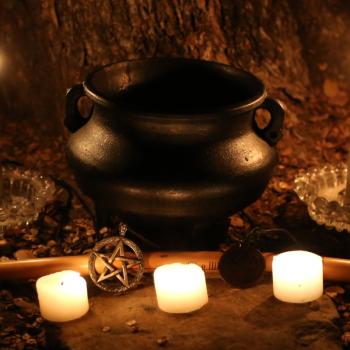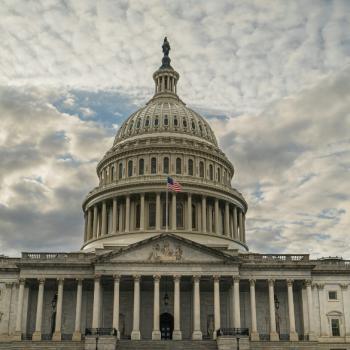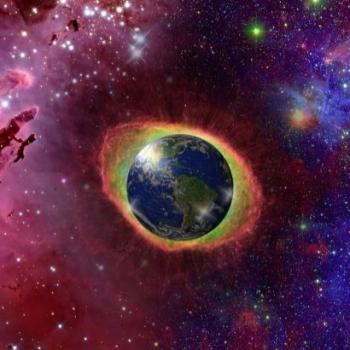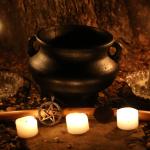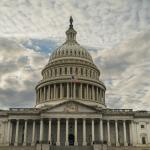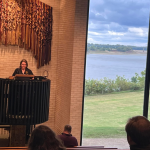A Pagan Almanac for August 9-11, 2012
Lunar Cycle: Days 9 to 7 of the waning Moon
Athens: Hekatombaion 22 t0 23: The Panathenaea continues
Martyred on
August 9, 1630: Marion Hardie of Aberdeen
August 9, 1664: Elisabeth de Grutere, Ghent
August 11, 1679: Melchior Waltisbien, Carl Pfister, and Johann Casper Plum of Meranin
They died in our name. Let us remember theirs.
William Blake wrote:
Each Man is in his Spectre’ Power
Untill the arrival of that hour,
When his Humanity awake
And cast his own Spectre into the Lake.
__________________________________________________________________
Actually, there are several very good ones, but the biggest and oldest is the Covenant of the Goddess. I know about it, because I had the immense privilege and good fortune of being able to help create it. At Litha 1975, the Witches in California, of at least a dozen different Traditions, signed the Covenant, bringing it into existence, only a dozen years after the Bucklands had founded the first Gardnerian coven in America. How did we manage to pull that off? Wasn’t that like trying to herd cats? Yes, it was. Here’s the story.
The first attempt I know about to create an umbrella organization that could provide legal benefits for people in alternative religions was by Michael Kinghorn in Los Angeles, who founded the Delphic Fellowship. He soon allied with Fred Adams, founder of Feraferia, and in 1969 they founded an alliance called the Council of Themis. It gathered members, who in 1972 included:
Albion Training Coven, Sara Cunningham, Pasadena, CA
CAW Nest, Lance Christie, Venice, CA
Church of All Worlds, St. Louis, MO
Church of the Eternal Source, Burbank, CA
Coven of the Wiccan, John Score, London, UK
Dancers of the Sacred Circle, Redway, CA (Feraferia)
Delphic Fellowship, Los Angeles
Feraferia, Fred & Svetlana Adams, Altadena, CA
First Universal Life Church of San Diego, Alpine, CA
Hellenic Group, P. Pawlowski, London, Eng.
Neo-Dianic Faith, W. Holman Keith, Los Angeles (Church of Aphrodite)
Ninth Way CAW Nest, Michael Hurley, Vietnam
Ordo Templi Astarte (Califia Chapter), Pasadena, CA (Thelemic)
Chapters of the Discordian Society in Texarkana, TX, New York City, and Venice, CA
Pagan Way, Ed Fitch, Minot, ND
Pagan Way, Penny & Michael Novack, Philadelphia, PA
Pentagram, Gerard Noel, London, Eng.
Psychedelic Venus Church, Jefferson F. Poland, Berkeley, CA
Religion of Venus, Emmanuel Petrakis, France
Rita Norling Coven, Pasadena, CA
Wiccan Coven, Martha Adler, Hawthorne, CA
Witch’s Broomstick, Joe Ferrante, Lawton, OK
Witches International Craft Association, Leo Louis Martello, NYC
Notice that eight of these groups identified themselves as being Gardnerian-style Wicca, eleven are Pagan groups of the same general type as Wicca, one is Thelemic, and five are radical groups that used the concept of a Goddess philosophically but did not worship her. Given the profound theological differences among these groups, it should not be surprising that their coalition was inherently unstable.
The Council of Themis functioned until early 1972, when Poke Runyon and Fred Adams spearheaded a successful effort to expel two members, the Psychedelic Venus Church and the Church of Aphrodite, from the Council. There was then a secondary blowup over the autocratic way in which the expulsion had been carried out, and the Council soon schismed into two separate organizations, the second being the Council of Earth Religions, whose member ship by the end of 1973 included:
Atlantion Wicca, Don Sawyer, Liverpool, NY;
Church of All Worlds, St. Louis;
Church of the Eternal Source, Burbank;
Dancers of the Sacred Circle, Redlands, CA (Feraferia)
House of Wicca, Courtney Willis, Buffalo, NY;
NY Coven of Welsh Traditionalist Witches, Ed Buczynski, Brooklyn, NY;
Pagan Way PA Grove, John Wootten;
Order of Thelema, El Cajon, CA;
Center for Pythagorean Studies, Polistena, Italy
Church of Wicca, Geo. Patterson, Bakersfield, CA;
Coven of Gwynvydd, Carolyn Clark, St. Louis, MO;
Gliocas Tuatha, Joe Wilson, Tujunga, CA;
Martha Adler Coven, Los Angeles;
Wicca Covendom of the Pagan Family of Our Lady, Jonathan Zotique, Toronto
This was a much more homogeneous grouping, but comprised at least six different types of Paganism, with theologies diverse enough that no common ground for creating like a church could be agreed upon. By the end of 1973, both councils had become moribund. However, Gwydion Pendderwen (Thomas DeLong), one of the most important of Victor Anderson’s initiates, was not about to give up. Because of his organizing skill, something like a “Pagan Ecumenical Council” convened at the home of Harold Moss and Jim Kemble in Burbank in February 1974. Of the 45 attendees, many did not want a record kept of their presence, but those who did sign the roster included:
Bill and Helen Mohs, plus many in their coven, Temple City, CA; and Bran & Moria (Dale and Diane B.) of Corax Covenstead, La Verne, CA; representing their American Tradition
Fred Adams and Svetlana Butyrin, Feraferia, Pasadena, CA
Harold Moss, Jim Kemble, and Don Harrison, Church of the Eternal Source
Joe and Mara Wilson, 1734 Tradition, Tujunga, CA
Ed Fitch, Redlands, CA, and Lady Athena and the Dagda (Van and Ann T.), Our Lady of the Hills, for the Gardnerians
Mary Le Vesque, Lawndale, CA (representing the New England Coven of Traditional Witches, though she did not announce that)
Steve Bell, COER Coordinator, San Diego, CA
W. Holman Keith, Church of Aphrodite, Los Angeles
Gwydion Pendderwen and Alison Harlow, Feri Tradition
Glenn Turner, Geoff Baldwin, Bud Chase, and myself, representing the NROOGD
It was an excellent networking occasion, since many of those present had never met face to face before, but there seemed to be no progress toward the goal of creating the hoped-for church. A few months later, a second meeting was held at Caerdderwen, Gwydion and Alison’s home in Oakland, with fewer people from southern California, more from northern, attended. One item on the agenda was discussion of a letter of protest that had been sent to a national columnist over her recent defamation of Witches. Unfortunately, some of the Pagan leaders responded by saying, “That’s not our problem. That’s why we don’t call ourselves Witches.” Afterward, Gwydion, Alison, and I conferred. Our thought was that, if the Pagans did not think our defamation was their problem, then maybe they weren’t our problem either. Maybe we were just driving ourselves nuts trying to include them in planning for a church. Maybe we could have a church that was only for Witches. But was that even possible? (To be continued)




